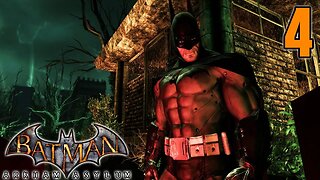Premium Only Content

OPERATION GLADIO - STAY BEHIND
OPERATION GLADIO - STAY BEHIND
Operation Gladio is the codename for clandestine "stay-behind" operations of armed resistance that were organized by the Western Union (WU), and subsequently by NATO and the CIA,[1][2] in collaboration with several European intelligence agencies.[3] The operation was designed for a potential Warsaw Pact invasion and conquest of Europe. Although Gladio specifically refers to the Italian branch of the NATO stay-behind organizations, "Operation Gladio" is used as an informal name for all of them. Stay-behind operations were prepared in many NATO member countries, and some neutral countries.[4]
During the Cold War, some anti-communist armed groups engaged in the harassment of left-wing parties, torture, terrorist attacks, and massacres in countries such as Italy.[5][6][7][8] The role of the CIA and other intelligence organisations in Gladio—the extent of its activities during the Cold War era and any responsibility for terrorist attacks perpetrated in Italy during the "Years of Lead" (late 1960s–early 1980s)—are the subject of debate. Researcher Francesco Cacciatore, in an article based on recently de-classified documents, writes that a "note from March 1972 specified that the possibility of using 'Gladio' in the event of internal subversions, not provided for by the organization's statute and not supported by NATO directives or plans, was outside the scope of the original stay-behind and, therefore, 'never to be considered among the purposes of the operation'. The pressure put forward by the Americans during the 1960s to use 'Gladio' for purposes other than those of a stay-behind network would appear to have failed in the long term."[9]
In 1990, the European Parliament adopted a resolution alleging that military secret services in certain member states were involved in serious terrorism and crime, whether or not their superiors were aware.[10] The resolution also urged investigations by the judiciaries of the countries in which those armies operated, so that their modus operandi and actual extension would be revealed.[11] To date, only Italy, Switzerland and Belgium have had parliamentary inquiries into the matter.[12][13]
The three inquiries reached differing conclusions as regarded different countries. Guido Salvini, a judge who worked in the Italian Massacres Commission, concluded that some right-wing terrorist organizations of the Years of Lead: La Fenice, National Vanguard and Ordine Nuovo were the trench troops of a secret army, remotely controlled by exponents of the Italian state apparatus and linked to the CIA.[14] Salvini said that the CIA encouraged them to commit atrocities.[15] The Swiss inquiry found that British intelligence secretly cooperated with their army in an operation named P-26 and provided training in combat, communications, and sabotage.[16] It also discovered that P-26 not only would organize resistance in case of a Soviet invasion, but would also become active should the left succeed in achieving a parliamentary majority.[17] The Belgian inquiry could find no conclusive information on their army. No links between them and terrorist attacks were found, and the inquiry noted that the Belgian secret services refused to provide the identity of agents, which could have eliminated all doubts.[18] A 2000 Italian parliamentary report from the left wing coalition Gruppo Democratici di Sinistra l'Ulivo reported that terrorist massacres and bombings had been organised or promoted or supported by men inside Italian state institutions who were linked to American intelligence. The report also said the United States was guilty of promoting the strategy of tension.[19] Operation Gladio is also suspected to have been activated to counter existing left-wing parliamentary majorities in Europe.[20]
The US State Department published a communiqué in January 2006 that stated claims the United States ordered, supported, or authorized terrorism by stay-behind units, and US-sponsored "false flag" operations are rehashed former Soviet disinformation based on documents that the Soviets forged.[21]
The word gladio is the Italian form of gladius, a type of Roman shortsword.
-
 25:28
25:28
Fit'n Fire
16 hours agoTop 5 LPVO Recommendations June 2025
798 -
 15:26
15:26
megimu32
1 day agoPush Pop vs Ring Pop: The Ultimate 90s Candy Showdown!
4.55K13 -
 LIVE
LIVE
Lofi Girl
2 years agoSynthwave Radio 🌌 - beats to chill/game to
419 watching -
 1:15:31
1:15:31
TheDozenPodcast
16 hours agoKevin Lane Exclusive after Prison Release | I Thought I’d Die in Jail
3.33K -
 1:44:58
1:44:58
The Pascal Show
11 hours ago $1.80 earnedMANHUNT UNDERWAY! Cops Search For Vance Boelter! WIFE DETAINED?! Press Conference
6.8K2 -
 26:18
26:18
Degenerate Plays
14 hours ago $0.25 earnedJust A Little Oopsie! - Batman: Arkham Asylum : Part 4
4.75K -
 1:20:03
1:20:03
Side Scrollers Podcast
1 day agoSide Scrollers KING OF THE COUCH Pre-Show
78.4K8 -
 11:42
11:42
Lacey Mae ASMR
12 hours ago $0.28 earnedASMR Goodnight to Everyone Except...
4.81K4 -
 22:55
22:55
SB Mowing
2 months ago“Never in a MILLION YEARS did I think this would happen” - An update on Beth
22.3K57 -
 8:46
8:46
Russell Brand
15 hours agoWatch View Hosts FACE OFF Over Trump Elon Spat
73.9K47